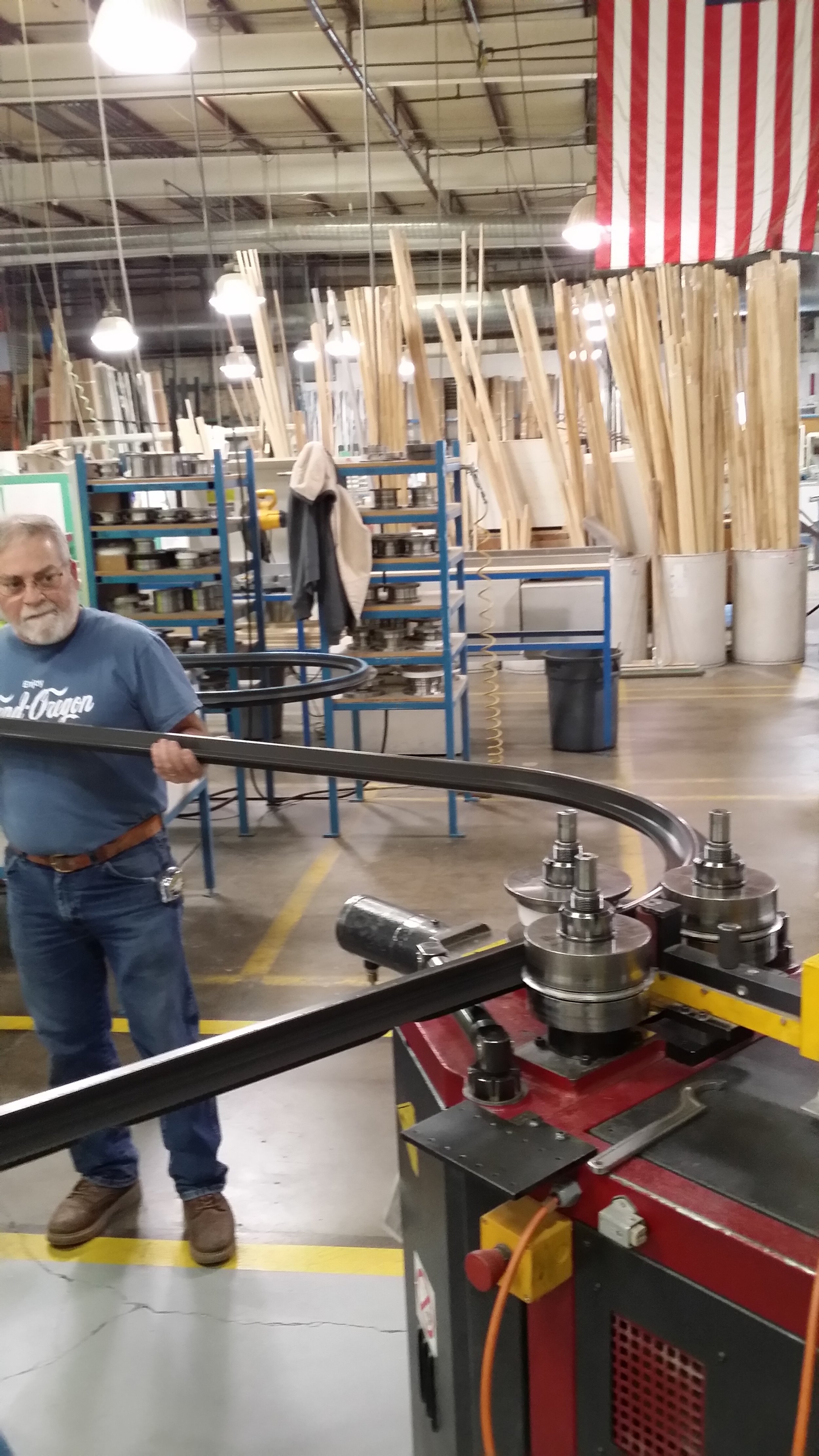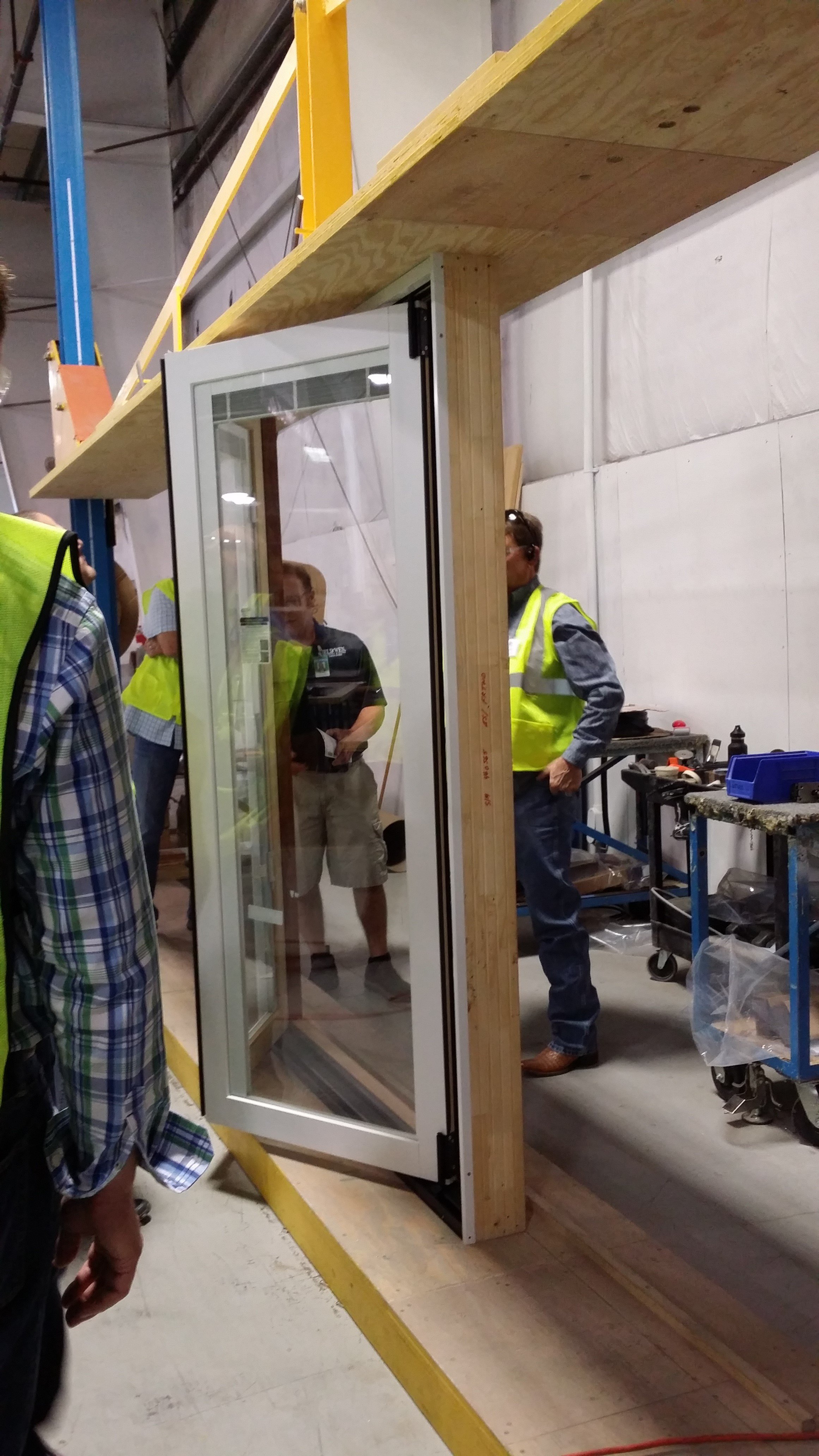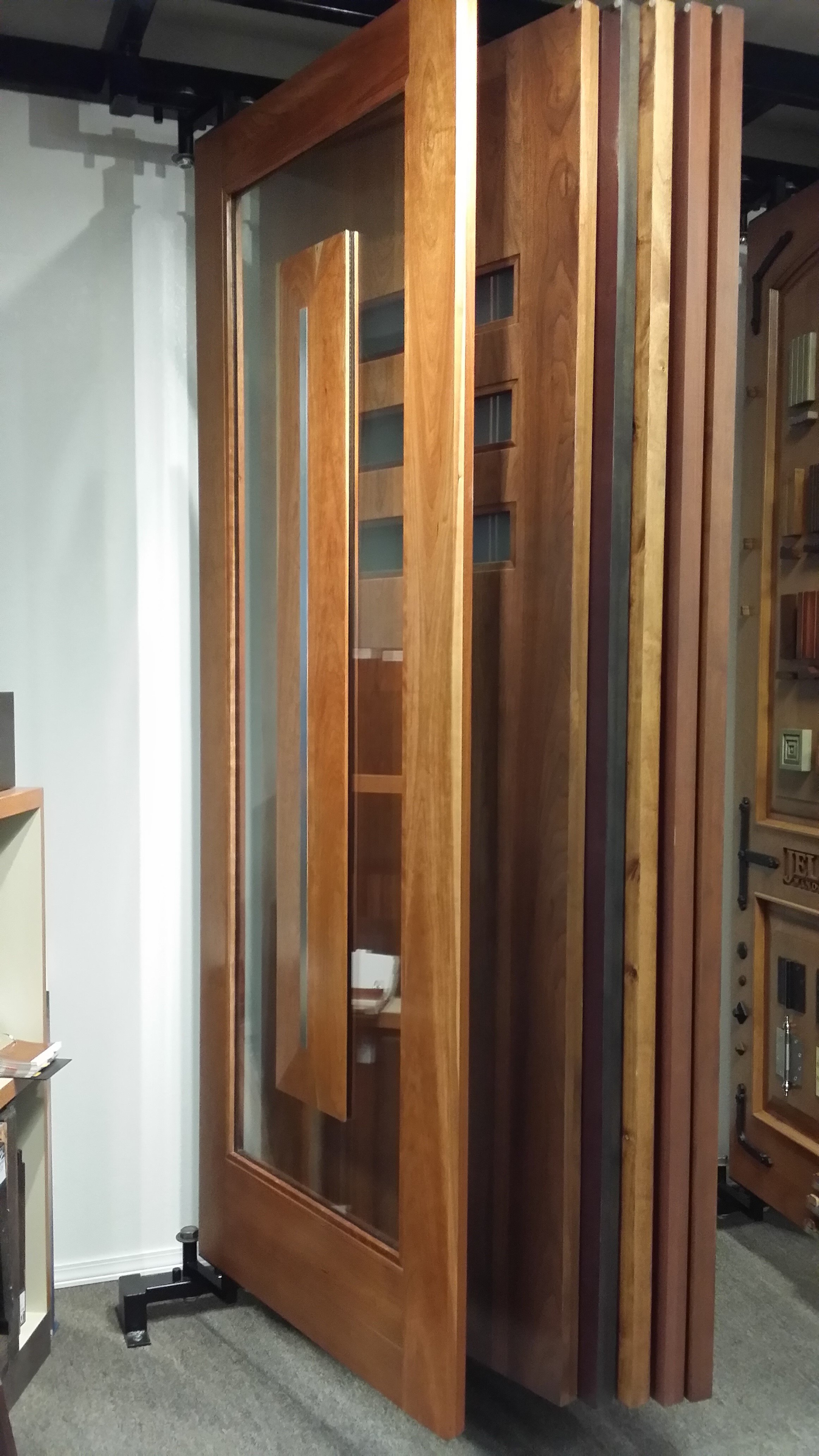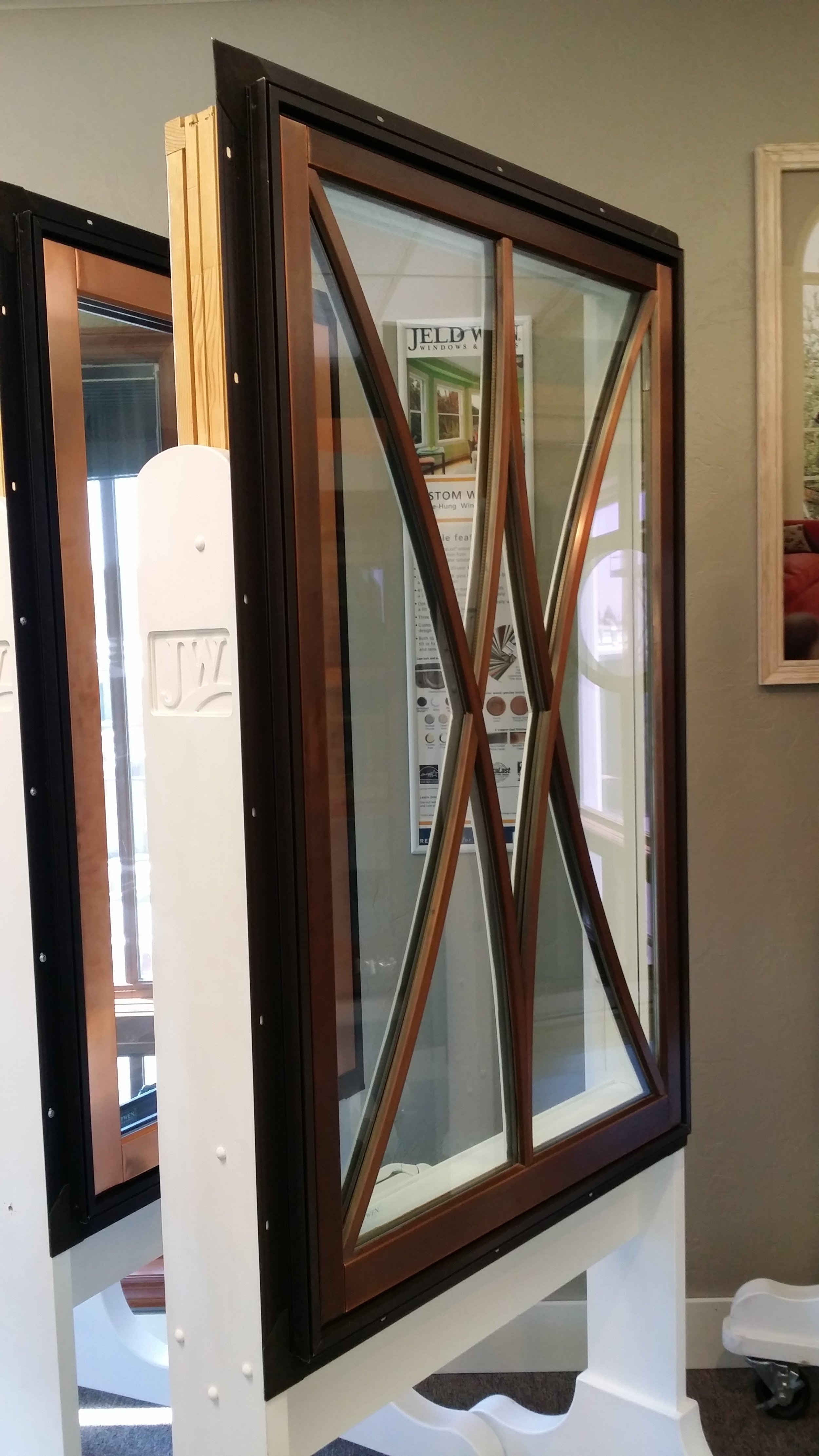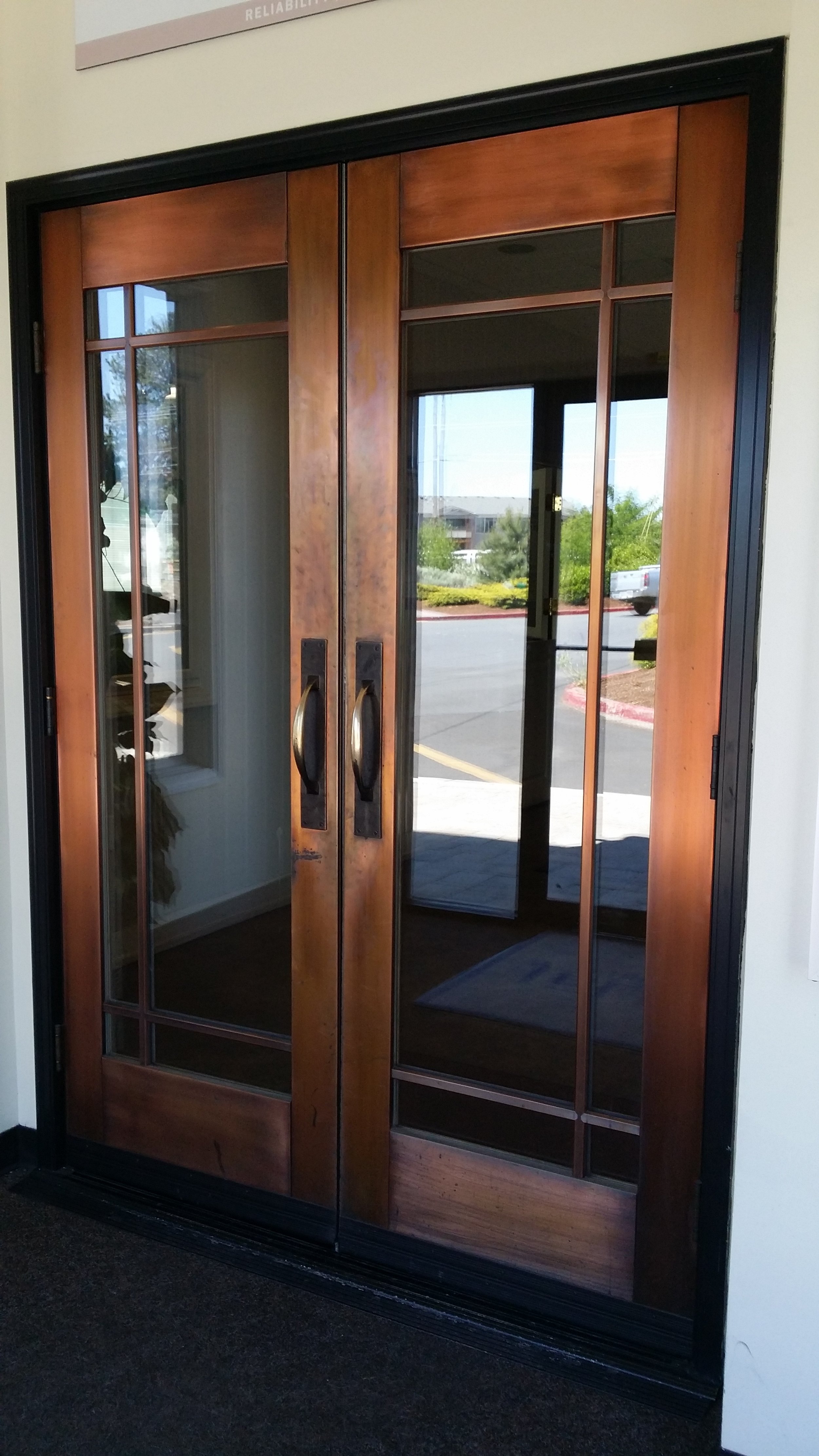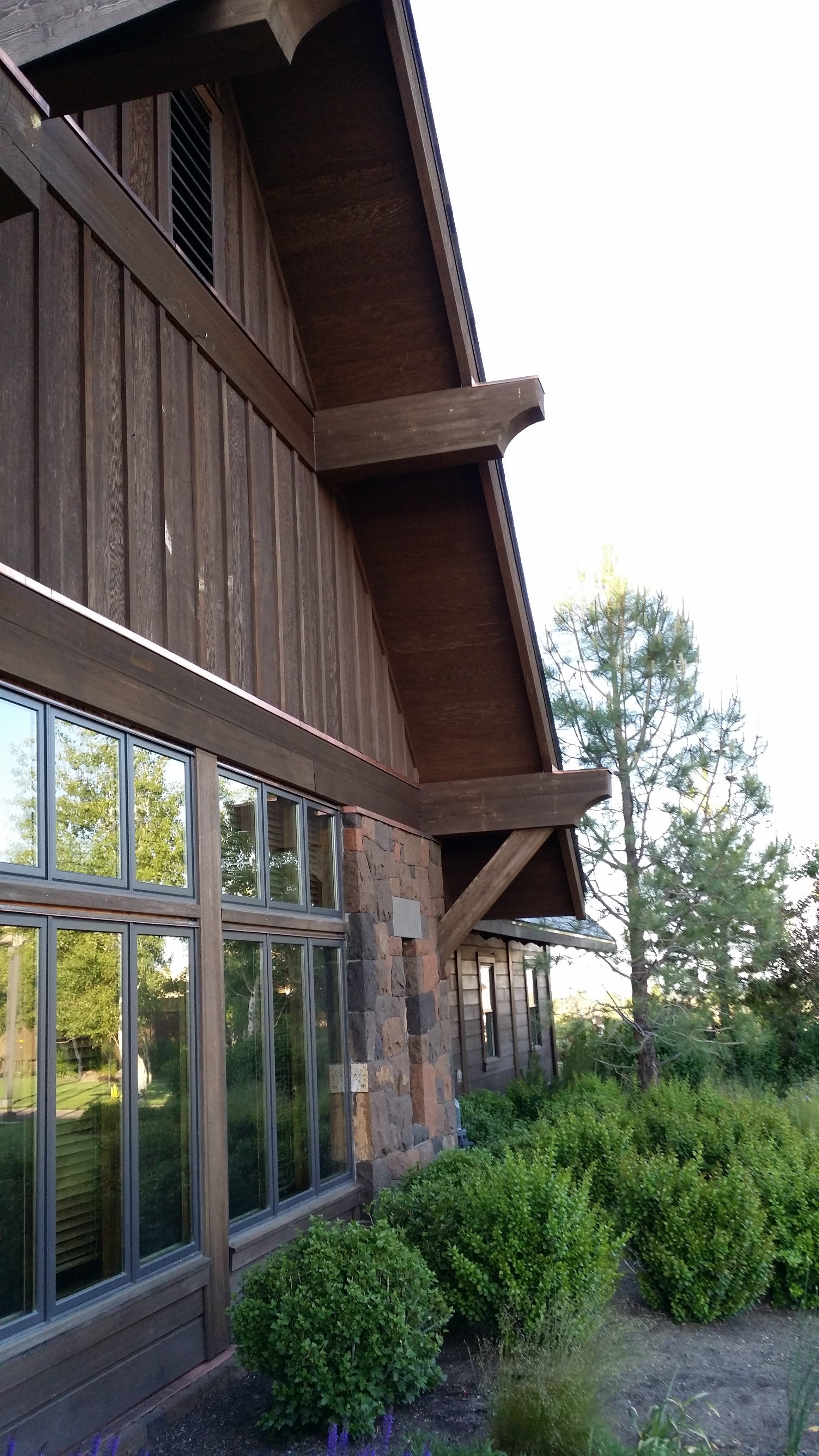I was invited to tour the Jeld-Wen plant in beautiful Bend, Oregon, which is where they manufacture their custom series of wood and aluminum clad-wood doors and windows. This used to be the Pozzi window company since 1978 before Jeld-Wen bought it in 1992. As an architect, this factory tour and their spiel was particularly inspiring because they showcased many custom designs and talked about their capabilities that compete with really high-end wood window manufacturers like Marvin or Kolbe-Kolbe. I was also very excited to see innovation in a 100-year-old industry and a can-do attitude. Having toured the Andersen window plant in Stillwater, Minnesota many years ago, I knew what to expect and could immediately see some similarities. As at any manufacturing facility, work flow efficiency and quality control are stressed upon; all the moving and heavy lifting is handled by machinery; measuring and cutting is computerized. One would think that a lot of the repetitive tasks involved in putting the windows together are automated, but not so! Window assembly is a labor intensive process. I was surprised to see that many of the parts are put together manually - men and women working with hand-held tools. From cladding the wood frame to joining the window frames together, from sealing the glass in the sash to setting the sash in the frame, how many hands touch one window before it is ready to ship, I'm sure they have the numbers. Perhaps because this is a much smaller facility and most windows are custom sizes and shapes, a Jeld-Wen veteran checks each and every window at the end of assembly.
It was also interesting to witness the testing performed on the windows and doors. A window/ door was installed in a sealed chamber that simulated real-world conditions like wind-driven rain to verify the unit's performance, and check on status of the weather-stripping, joints, etc.
Much like other wood window and door manufacturers, Jeld-Wen started as small mill-work company in 1960 in Klamath Falls, Oregon where timber harvesting was booming. They have since grown to be one of the top, holding a large market share in a very competitive industry, offering a diversified portfolio of products that cater to various budgets.
My personal experience is only with the Jeld-Wen Siteline EX aluminum clad-wood series, mostly casements and fixed windows. I would be loath to specify a window with wood on the exterior, but that's easy for me since I don't do historic preservation type projects. Wood on the exterior of a window is just asking for trouble, even if it is treated wood such as Jeld-wen's proprietary AuroLast wood. I also only specify windows with an integral nailing fin, so that it installed and flashed according to best building practices. Anybody who installs a window using a "block frame" so that they "don't have to disturb" existing exterior finish such as siding, stucco, or stone, knows nothing about infiltration and water management in building envelope. If you ask me, they should not even be selling this option.
Jeld-wen offers many features and options that let you customize their product for a sophisticated client - upgrades in glass (they buy from Cardinal Glass), screens (Phantom Screens), finishes (pre-finish options, wood species, exterior colors, kynar finish, etc). But if you are looking for a window of an unusual size or shape with unique features, I think you will find that the custom Jeld-wen plant in Bend, Oregon will not disappoint. They look at your request, and the design team will meet to review, do research, and get back to you with an answer. It could cost you a lot, but if there is a way to do it, they will build it. They make a prototype of every unique window, test it in-house for wind pressure, water and air infiltration.
The highlight for me was the curved glass windows and the copper clad windows. They can clad the sash with copper but since it is a roll-formed product (not extruded like aluminum) it cannot be used on the (structural) frame of the window. They had several examples with black aluminum frames and copper sashes, which looked pretty neat. Keep in mind that copper is a living finish, and will patina over time, the end result being different from New York to Austin. I have a love affair with vertical grain Douglas Fir (something about all the grain lines aligned so tightly makes my heart sing) and copper. My eyes got to feast on many examples of both materials.
Other products I was excited to see were the large-opening folding window and door systems - 4 panel bi-parting doors, multi-slide stackable pocket doors, zero-corner doors. If money is no object, then the options start to open up, no pun intended.
I firmly believe that innovation at the customizable (uppermost) level trickles down to the mass market as demand will drive the cost down. What is expensive and high-end today, will become commonplace tomorrow. What was considered luxury yesterday is a standard today. We've seen it in the food industry, the car industry, all types of technology, and the building industry is certainly no exception.
Cheers,
Sharon George.
